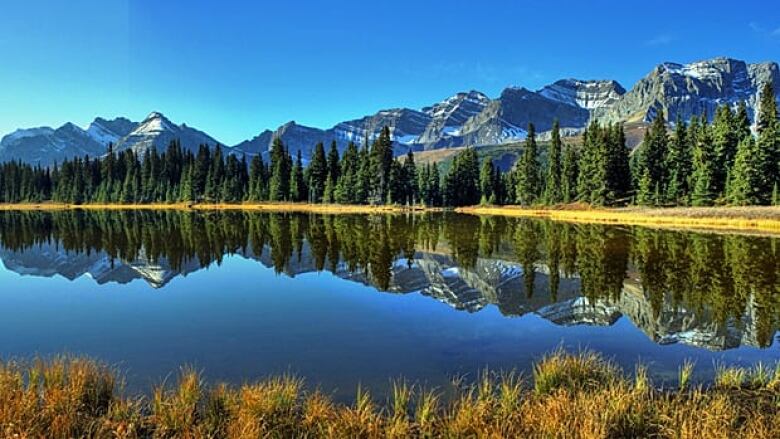Alberta behind on promise to protect land, says CPAWS
Canadian Parks and Wilderness Society release assessment of Canada's promise to protect 17 per cent

Alberta and Canada are quickly falling behind on their promise to protect land and fresh water, according to a new report by an environmental group.
In 2010, the federal government committed to preserving at least 17 per cent of Canadianland over the next decade as part of the United Nations Convention on Biological Diversity.
At the halfway point of that ten year plan, the Canadian Parks and Wilderness Society (CPAWS) has released an assessment of Canada's progress so far and the results aren't promising.
"We haven't been making the progress that we should be since we signed these international agreements," says KatieMorrison, a conservation director atCPAWSSouthern Alberta. "If the government continues land preservation at the current rate, it won't be able to achieve its goal for another 50 years."
Canada is well below the global average of 15 per cent, with just 10 per cent of land preserved. Alberta isn't much better off with 12 per cent of land protected.
The percentage of protected land in Alberta, which hasn't grown at all for the past four years, will increase with the designation of protected areas promised under the Lower Athabasca Regional Plan and South Saskatchewan Regional Plan, the government of Alberta's long-term plans to create and expand conservation areas.
Alberta leans on national parks
However, Morrison says much of Alberta's natural regions are still under-represented.

"Because about two-thirds of our protected areas in Alberta are national parks, we think it's time for the provincial government to step up and take on the responsibility," she says.
CPAWS hopes to work with the provincial government to protect the Castle Wilderness Area as part of the SouthSaskatchewan Regional Plan.
Laura Tupper, press secretary for the provincialminister of environment and parks, says the office is aware that many Albertans are calling for enhanced protection of that area.
"I can tell you we have rolled up our sleeves and have already begun important work on the details of what enhanced protection would look like as promised to Albertans in the election," she said.
Canada currently trails behind the United States, Russia and Australia in its commitment to protecting land and freshwater. It also lags behind poorer nations such as Bolivia and Tanzania.
"Protecting areas is one of the most proven ways of protecting our air and water for communities," Morrison says. "They're also great places for people to get out and enjoy nature."












_(720p).jpg)


 OFFICIAL HD MUSIC VIDEO.jpg)
.jpg)



























































































